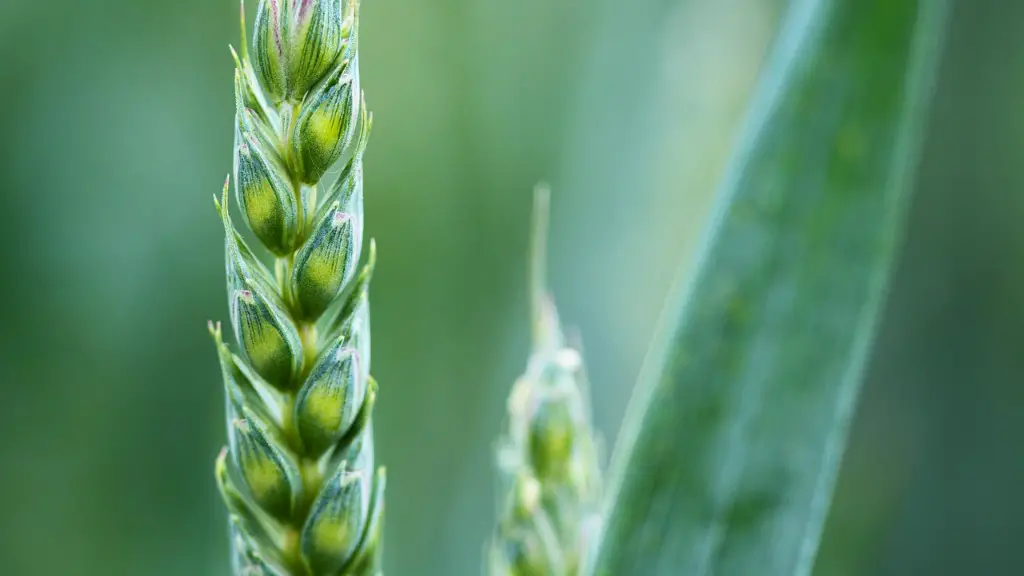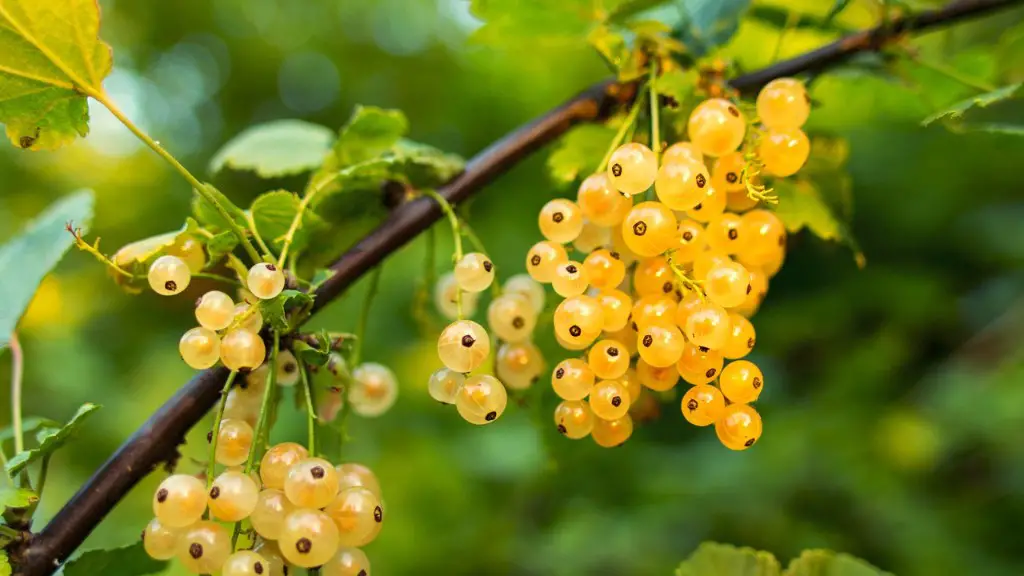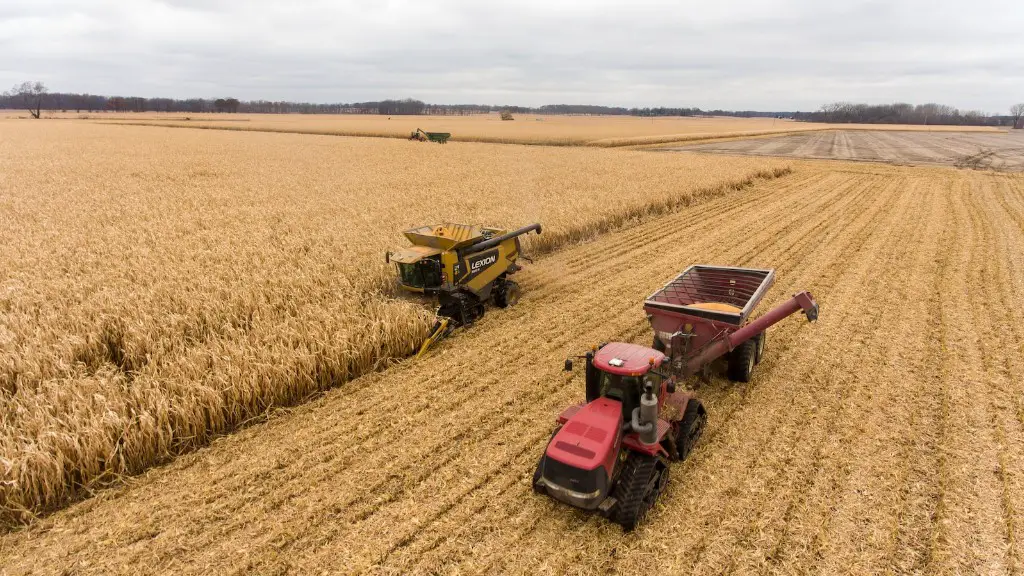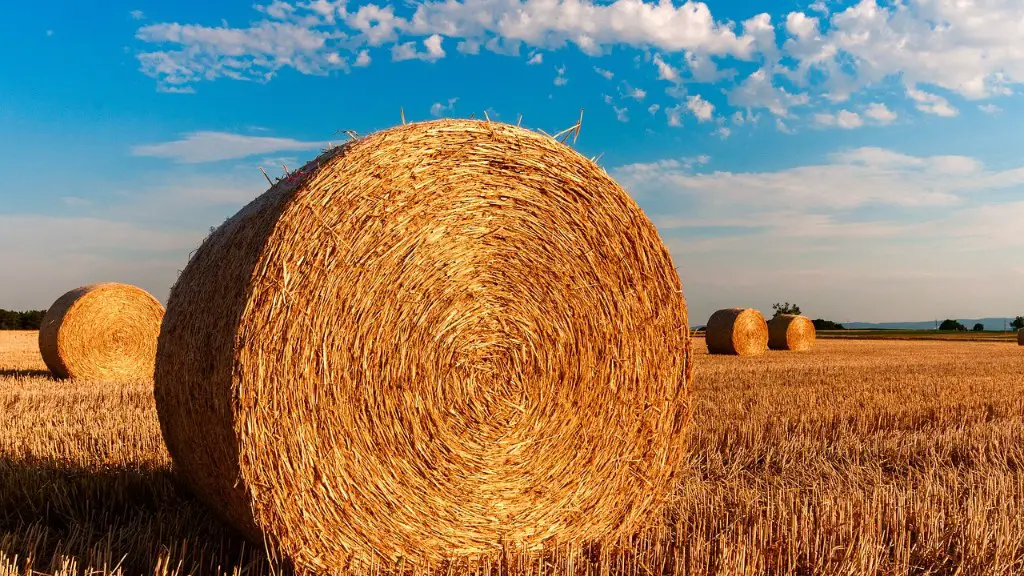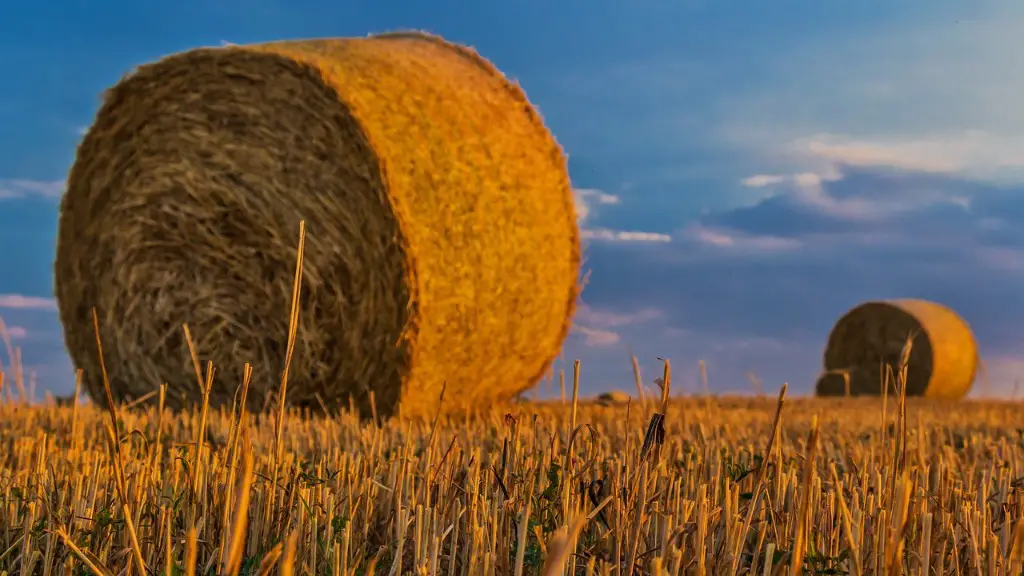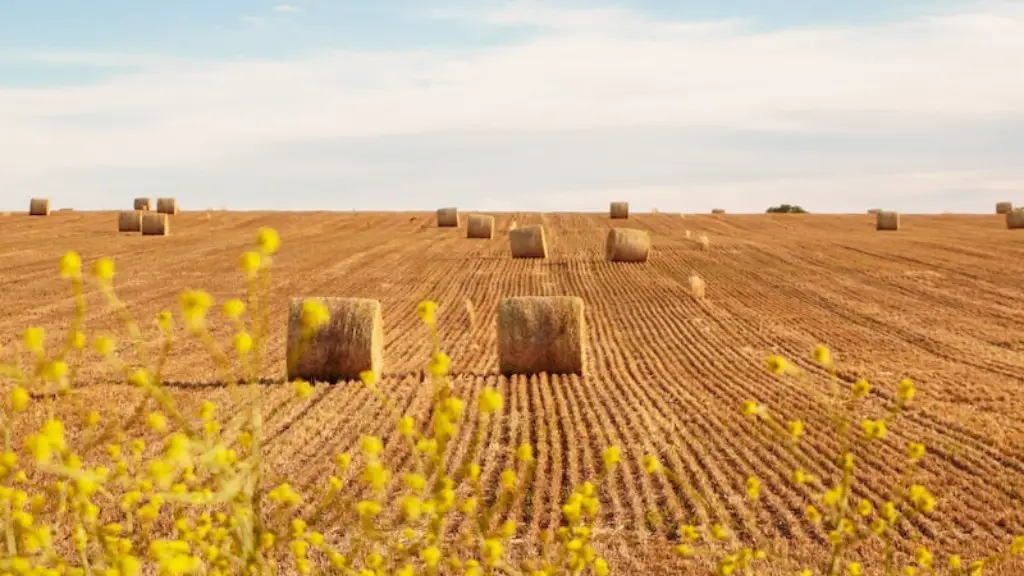Drones are unmanned aerial vehicles (UAVs) that are used to support agricultural production. They are capable of flying autonomously and controlled by a remote-control operator. In modern farming, drones can provide a variety of services that go beyond the traditional use of aircraft and have become integral aids in many agricultural operations. They have the potential to revolutionize the way fertilizer and pesticide applications are monitored, reduce impact on water resources, increase crop yields, and provide access to live imagery to assess crop health and productivity.
In terms of practical uses, drones in agriculture can be used to survey large areas of land in a relatively short period of time. As such, they can map the fields and provide images that can then be used to detect any irregularities. They are also often used to monitor the growth of crops as they are planted, enabling farmers to quickly analyze and tweak their management strategies. Additionally, drones can be used to locate water resources and spray fertilizers and pesticides in a precise and controlled manner.
Compared to traditional pest-control methods, drones are more efficient, cost effective and environmentally friendly. Drones can deliver precise, targeted pesticide applications with reduced usage, meaning lower costs for the farmer, and reducing the potential for harming beneficial insects and other plant-dwellers. The use of drones also reduces water waste, as they allow field boundaries to be delimited and treated until completion instead of when a certain sprayer reaches a certain point.
In addition to monitoring and mapping, drones are being used to monitor farm animals and keep track of their feed consumption. This is increasingly becoming popular among livestock farmers, who can now use drones to fly up to the fields and scan the animals within them. Such technology could also be valuable for farmers in need of quick updates on the health and condition of their livestock.
Drones are also useful for observing farmer’s zones of detention, like rivers and dams. Mapping the features of these areas is important for checking the quality of the water and stream flow. The drones can fly these zones and collect data for analysis and mapping purposes. Furthermore, the use of drones in agriculture is expected to expand further in the coming years due to its environmental benefits and cost savings.
Drone in Agriculture Research
The use of drones in agricultural applications is a rapidly emerging field with a great deal of interest from research organizations. Numerous studies have been conducted with the aim of understanding the potential benefits of drones in agriculture. By researching the use of drones in this field, scientists hope to be able to make better decisions on the best strategies for integrating them into a farm’s operations.
For example, research studies have been conducted on the use of drones to increase crop yields, monitor crop health and provide real-time updates on the condition of a farm’s fields. Such studies have also looked into the effects of using drones to spray fertilizers and pesticides in a more precise and controlled manner, as well as the potential of drones to be used in automated systems for catching pests on farms.
Furthermore, in the context of developing countries, research studies have explored the use of drones in providing mapping of lands, allowing scientists to better understand how to carry out sustainable land-use management and mitigate land degradation. Such research-backed activities have shown that drones have the potential to revolutionize the way in which resources are managed in these regions.
In the areas of business and commerce, drone research has looked into the potential of this technology for providing data on market trends and aiding in retail decision-making processes. By analyzing data gathered from drone’s surveys of a field, farmers can better understand inputs and outputs when considering what crops to grow or what supplies to bring in.
Finally, research has been conducted on the use of drones to provide insight into farming practices while in-flight. By collecting data while flying over a crop field and using computer vision, scientists have been able to accurately map out and track changes in the field without requiring manual entry.
Drone in Agriculture Regulation
The use of drones in agriculture is subject to a variety of regulations as decided by the specific nation or region. Governments often require applicants to meet certain criteria before they can legally operate drones in their airspace. Such regulations are designed to protect the safety of the public, inform operators on the safe handling of drones and ensure the privacy of citizens who may be in the area when drones are in operation.
In the United States, the Federal Aviation Administration (FAA) sets the rules for drone operation in agricultural areas under its Part 107 regulations. Under these regulations, commercial drone operators have to undergo a series of tests and be certified in order to fly in open airspace. Additionally, there are restrictions on flying drones over people, as well as stringent requirements for airspace authorization. Each of these regulations ensure that both public safety and privacy rights are being upheld.
In Europe, the European Aviation Safety Agency (EASA) is responsible for establishing operative regulations governing the use of drones in agriculture. Such regulations include requirements for certification and flight safety checks, as well as the use of geo-fencing technology to prevent operation in no-fly zones. Additionally, the regulations dictate how drone operators must handle the data they collect.
Finally, in Canada the operation and use of drones in agricultural applications is governed by the Canada Drone Regulations. These regulations provide a framework for both commercial and recreational drone operations, setting forth safety rules that ensure the safety of both the operator and the public. It also outlines details on how operators must protect data collected by drones during operations.
Drone in Agriculture Applications
The applications of drones in agriculture are vast and continue to expand. These applications range from pesticide and fertilizer applications to surveying large areas of land and monitoring the health of crops and other agricultural assets. As such, drones have become an invaluable asset in modern farming.
Drones are often used to survey large plots of land in a relatively short period of time, enabling speedy collection of data which can be analyzed to detect any irregularities in the fields. Such data can help farmers in making decisions when it comes to managing their fields and making efficient use of resources. Furthermore, drones are often used for live imagery to assess crop health and productivity, as well as for precision applications of fertilizer and pesticides.
Additionally, drones can be used to monitor livestock and keep track of their feed consumption. This is becoming ever more popular among livestock farmers, who can now use drones to fly up to their fields and check the animals within them. Suitable technology can also be utilized to ascertain the health and condition of their livestock in a timely manner.
Moreover, drones can fly and survey farmer’s zones of detention, like rivers and dams, proving useful in assessing and mapping the quality of water and stream flow. Lastly, drones can be used to analyze soil conditions and detect segments of soil that are particularly deficient in essential minerals or nutrients, in order to inform efficient and more precise use of fertilizers.
Drone in Agriculture Benefits
The use of drones in agriculture has the potential to revolutionize the way farm management is carried out. By using them to survey fields, measure yields, detect deficiencies, monitor soil composition and deliver precise, targeted pesticide applications, farmers can take advantage of cost-efficient management approaches and reduce the environmental impact of their farming.
The widespread use of drones in agricultural production also has the potential to increase yields and reduce wastage. In terms of yields, drones provide a valuable resource for identifying areas of the field that require additional attention or intervention. As such, resources can be applied more effectively to increase productivity and overall crop yields.
Furthermore, the use of drones to deliver targeted pesticide applications not only reduces the amount of pesticide used in the process, but also avoids wastage and helps to save water. Similarly, the use of drones in mapping enables field boundaries to be delimited and treated until completion, reducing water wastage as compared to traditional methods.
Additionally, when combining drones with hardware like moisture sensors and imaging technology, farmers can gain real-time insights into their crop-growing regions. This information can provide valuable insight into soil composition, insect populations, and plant health, enabling farmers to adjust their management practices when needed.
Finally, drones can help farmers monitor their livestock more efficiently. By flying up to their fields and scanning the animals within, farmers can quickly identify any issues and take fast, corrective action. This can prove invaluable for livestock farmers who rely on quick updates on the health and condition of their livestock.
